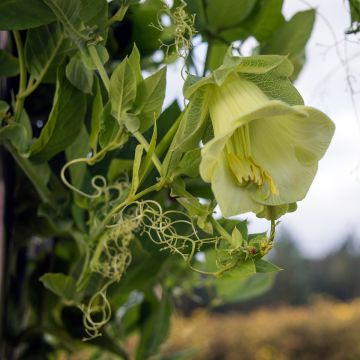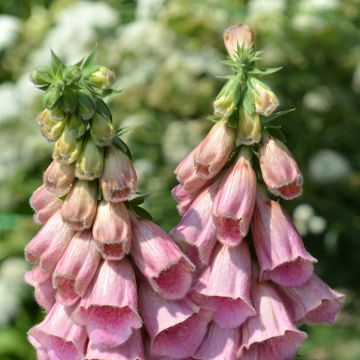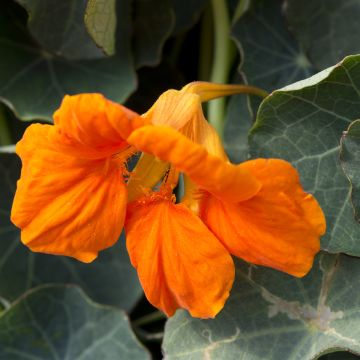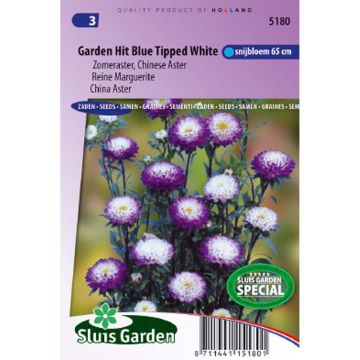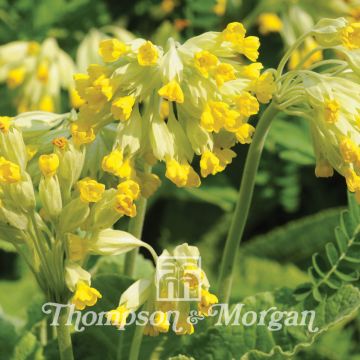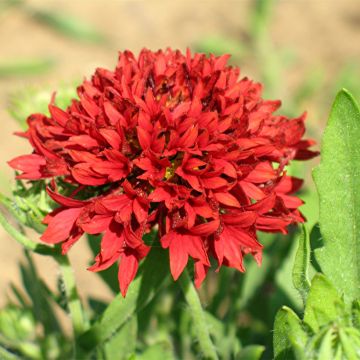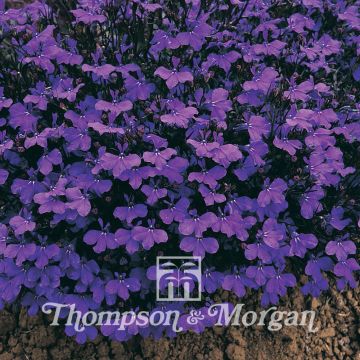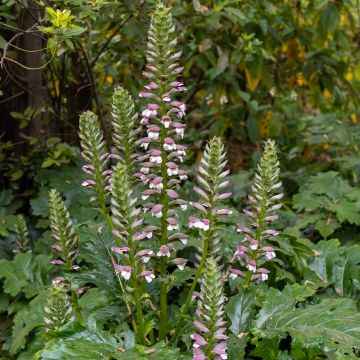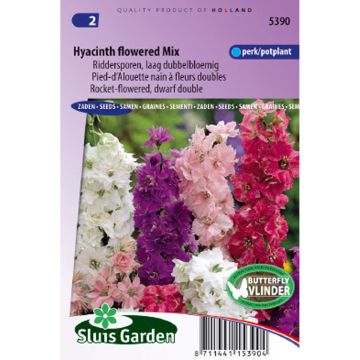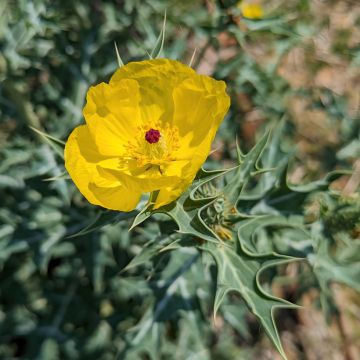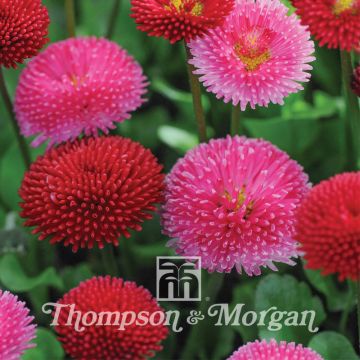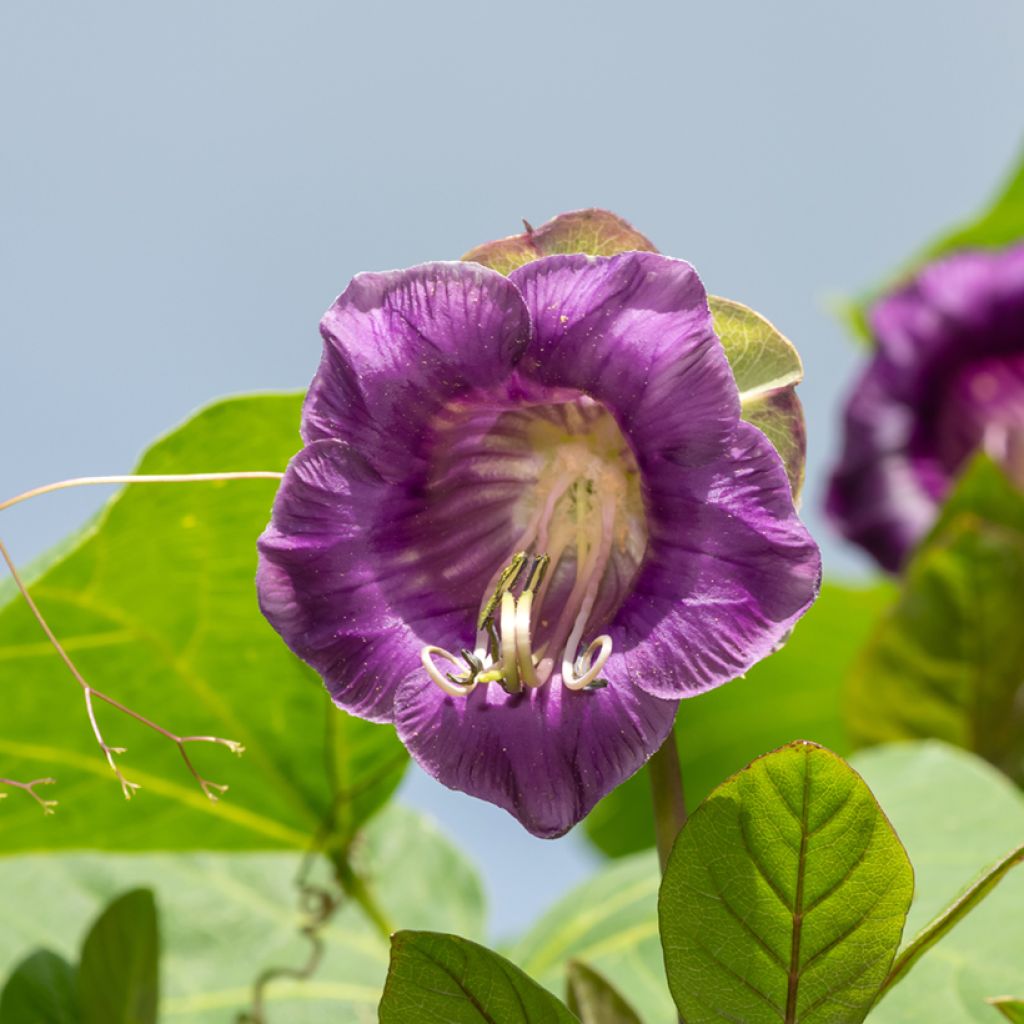

Cobea scandens Violet Blue Bells Seeds
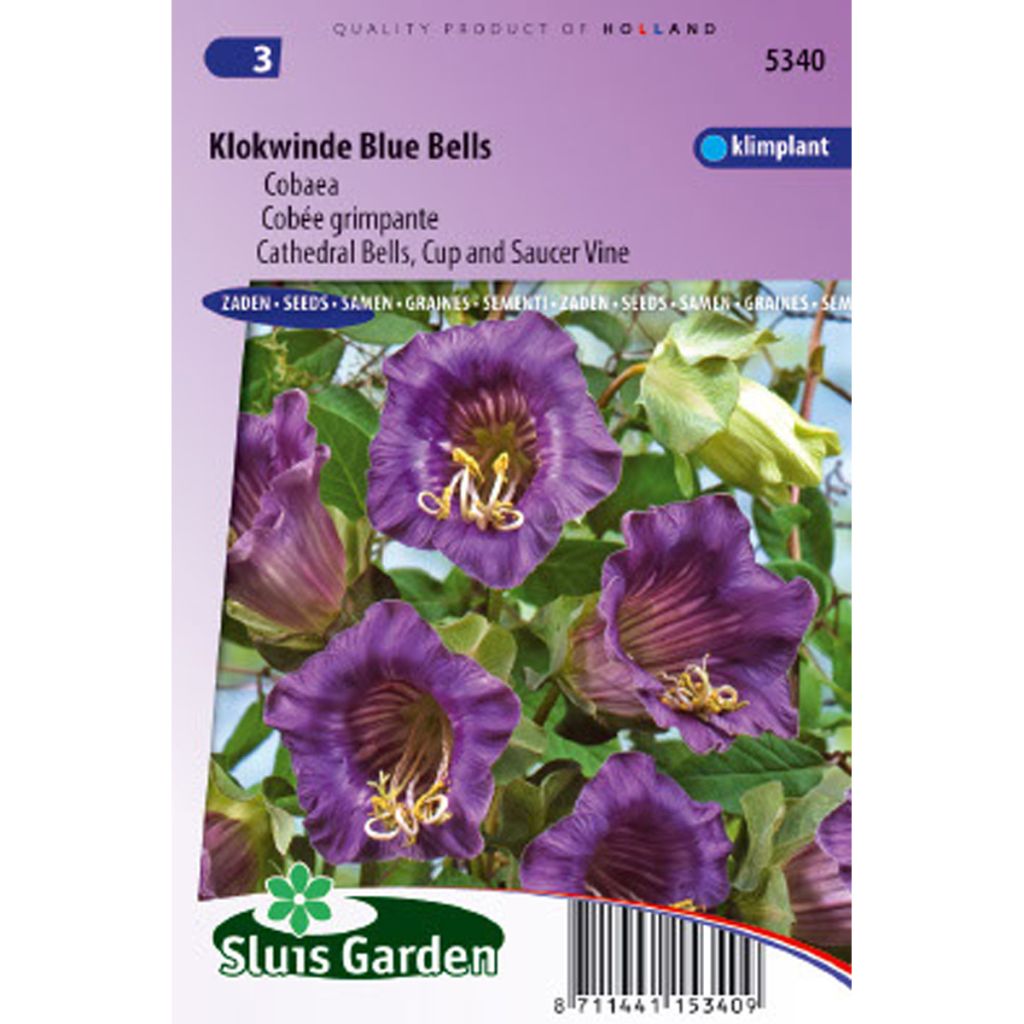

Cobea scandens Violet Blue Bells Seeds
Cobea scandens Violet Blue Bells Seeds
Cobea scandens Violet Blue Bells
Cup and Saucer Vine
All the seeds germinated, then transferred to pots, they grew well.
Syl83, 23/10/2024
This item cannot be shipped to the selected country
Dispatch by letter from €3.90
More information
Schedule delivery date,
and select date in basket
This plant carries a 6 months recovery warranty
More information
We guarantee the quality of our plants for a full growing cycle, and will replace at our expense any plant that fails to recover under normal climatic and planting conditions.
Seed-only orders are dispatched by sealed envelope. The delivery charge for seed-only orders is €3.90.
Does this plant fit my garden?
Set up your Plantfit profile →
Description
Cobaea scandens Violet Blue Bells, also called cup and saucer vine, is a vigorous twining climber with much retro charm. This spectacular variety bears delightful, greenish-yellow bell-shaped blooms with rolled-up edges that mature to purple, and that are nestled in its lush, deep green foliage from summer to autumn. It climbs frames by means of long, branched tendrils like those of peas. This tender perennial is typically grown as an annual in our climates, in a well-exposed position, in rich, moist but well-drained soil. It will rapidly and beautifully cover any frame that you will leave at its disposal. It also grows well in containers.
Native to the tropical and subtropical regions of both Americas, particularly to central Mexico, the cup and saucer vine is a fast-growing herbaceous perennial vine belonging to the family Polemoniaceae, which is grown as an annual in our cooler climates. It reaches a height of 3 m and a width of about 1 m in the space of one season. Its slender stems bear dense, dark green, evergreen foliage. The leaves are composed of 3 pairs of 10 cm long, veined leaflets. The terminal leaflet transforms into a forked tendril which allows the plant to cling onto anything. Flowering starts in August, rarely earlier, and continues throughout autumn, right up until the first cold spells. Campanulate blooms appear in the axils of the leaves, measuring 7-8 cm long, and feature edges that turn or roll up. These flowers start out greenish-yellow before turning blue and then purple as they bloom, revealing a bouquet of yellow stamens in a purple streaked throat. They give off a scent when young, especially in the evening. The blooms are followed by the formation of an ovoid fruit containing the seeds.
Cup and saucer vine is a great choice for quickly covering a trellis, arbour, or different types of fencing. But its old-fashioned charm makes it even more valuable asset for covering a wall of old stones, an old well, or the low walls of a terraced garden from which it will gracefully tumble down. It excels among the September bloomers, just as the summer bloomers fade and the softer light of the end of season plays and passes through its bells. Plant the variety Violet Blue Bells with the variety Alba and train them on the same frame: their colours harmonize perfectly together. Plant blue, pink and white asters and hardy chrysanthemum at their base to create a very romantic scene.
Report an error about the product description
Flowering
Foliage
Plant habit
Botanical data
Cobea
scandens
Violet Blue Bells
Polemoniaceae
Cup and Saucer Vine
South America
Other Cobaea seeds
Planting and care
Soak cup and saucer vine seeds for 2 hours in warm water before sowing. Sow in late winter or early spring, at 18-24C in good quality compost. Cover the seeds with a thin layer of compost. Keep the soil moist but not wet, for example by enclosing the seedling in a polyethylene bag. Germination usually takes 21-30 days. When the seedlings are large enough to be handled, prick them out into 13 cm pots. Place in cooler conditions and water regularly. They should then be gradually acclimatized to outdoor conditions for 10-15 days before planting them out in the open ground after any risk of frost has passed, spacing the plants 60 cm apart. Choose a sheltered, sunny, warm location with ordinary but well-drained soil. Plants grown in pots under glass should be provided with a certain degree of atmospheric humidity. If the flowers are hidden by the foliage, you can prune it back slightly. Avoid planting in soil that is too rich, as this will promote the development of the foliage at the expense of the flowers. The soil should be consistently moist but well-drained. When grown in pots, use good quality compost that will retain water.
Sowing period
Intended location
-
, onOrder confirmed
Reply from on Promesse de fleurs
Flower seeds
Haven't found what you were looking for?
Hardiness is the lowest winter temperature a plant can endure without suffering serious damage or even dying. However, hardiness is affected by location (a sheltered area, such as a patio), protection (winter cover) and soil type (hardiness is improved by well-drained soil).

Photo Sharing Terms & Conditions
In order to encourage gardeners to interact and share their experiences, Promesse de fleurs offers various media enabling content to be uploaded onto its Site - in particular via the ‘Photo sharing’ module.
The User agrees to refrain from:
- Posting any content that is illegal, prejudicial, insulting, racist, inciteful to hatred, revisionist, contrary to public decency, that infringes on privacy or on the privacy rights of third parties, in particular the publicity rights of persons and goods, intellectual property rights, or the right to privacy.
- Submitting content on behalf of a third party;
- Impersonate the identity of a third party and/or publish any personal information about a third party;
In general, the User undertakes to refrain from any unethical behaviour.
All Content (in particular text, comments, files, images, photos, videos, creative works, etc.), which may be subject to property or intellectual property rights, image or other private rights, shall remain the property of the User, subject to the limited rights granted by the terms of the licence granted by Promesse de fleurs as stated below. Users are at liberty to publish or not to publish such Content on the Site, notably via the ‘Photo Sharing’ facility, and accept that this Content shall be made public and freely accessible, notably on the Internet.
Users further acknowledge, undertake to have ,and guarantee that they hold all necessary rights and permissions to publish such material on the Site, in particular with regard to the legislation in force pertaining to any privacy, property, intellectual property, image, or contractual rights, or rights of any other nature. By publishing such Content on the Site, Users acknowledge accepting full liability as publishers of the Content within the meaning of the law, and grant Promesse de fleurs, free of charge, an inclusive, worldwide licence for the said Content for the entire duration of its publication, including all reproduction, representation, up/downloading, displaying, performing, transmission, and storage rights.
Users also grant permission for their name to be linked to the Content and accept that this link may not always be made available.
By engaging in posting material, Users consent to their Content becoming automatically accessible on the Internet, in particular on other sites and/or blogs and/or web pages of the Promesse de fleurs site, including in particular social pages and the Promesse de fleurs catalogue.
Users may secure the removal of entrusted content free of charge by issuing a simple request via our contact form.
The flowering period indicated on our website applies to countries and regions located in USDA zone 8 (France, the United Kingdom, Ireland, the Netherlands, etc.)
It will vary according to where you live:
- In zones 9 to 10 (Italy, Spain, Greece, etc.), flowering will occur about 2 to 4 weeks earlier.
- In zones 6 to 7 (Germany, Poland, Slovenia, and lower mountainous regions), flowering will be delayed by 2 to 3 weeks.
- In zone 5 (Central Europe, Scandinavia), blooming will be delayed by 3 to 5 weeks.
In temperate climates, pruning of spring-flowering shrubs (forsythia, spireas, etc.) should be done just after flowering.
Pruning of summer-flowering shrubs (Indian Lilac, Perovskia, etc.) can be done in winter or spring.
In cold regions as well as with frost-sensitive plants, avoid pruning too early when severe frosts may still occur.
The planting period indicated on our website applies to countries and regions located in USDA zone 8 (France, United Kingdom, Ireland, Netherlands).
It will vary according to where you live:
- In Mediterranean zones (Marseille, Madrid, Milan, etc.), autumn and winter are the best planting periods.
- In continental zones (Strasbourg, Munich, Vienna, etc.), delay planting by 2 to 3 weeks in spring and bring it forward by 2 to 4 weeks in autumn.
- In mountainous regions (the Alps, Pyrenees, Carpathians, etc.), it is best to plant in late spring (May-June) or late summer (August-September).
The harvesting period indicated on our website applies to countries and regions in USDA zone 8 (France, England, Ireland, the Netherlands).
In colder areas (Scandinavia, Poland, Austria...) fruit and vegetable harvests are likely to be delayed by 3-4 weeks.
In warmer areas (Italy, Spain, Greece, etc.), harvesting will probably take place earlier, depending on weather conditions.
The sowing periods indicated on our website apply to countries and regions within USDA Zone 8 (France, UK, Ireland, Netherlands).
In colder areas (Scandinavia, Poland, Austria...), delay any outdoor sowing by 3-4 weeks, or sow under glass.
In warmer climes (Italy, Spain, Greece, etc.), bring outdoor sowing forward by a few weeks.

































